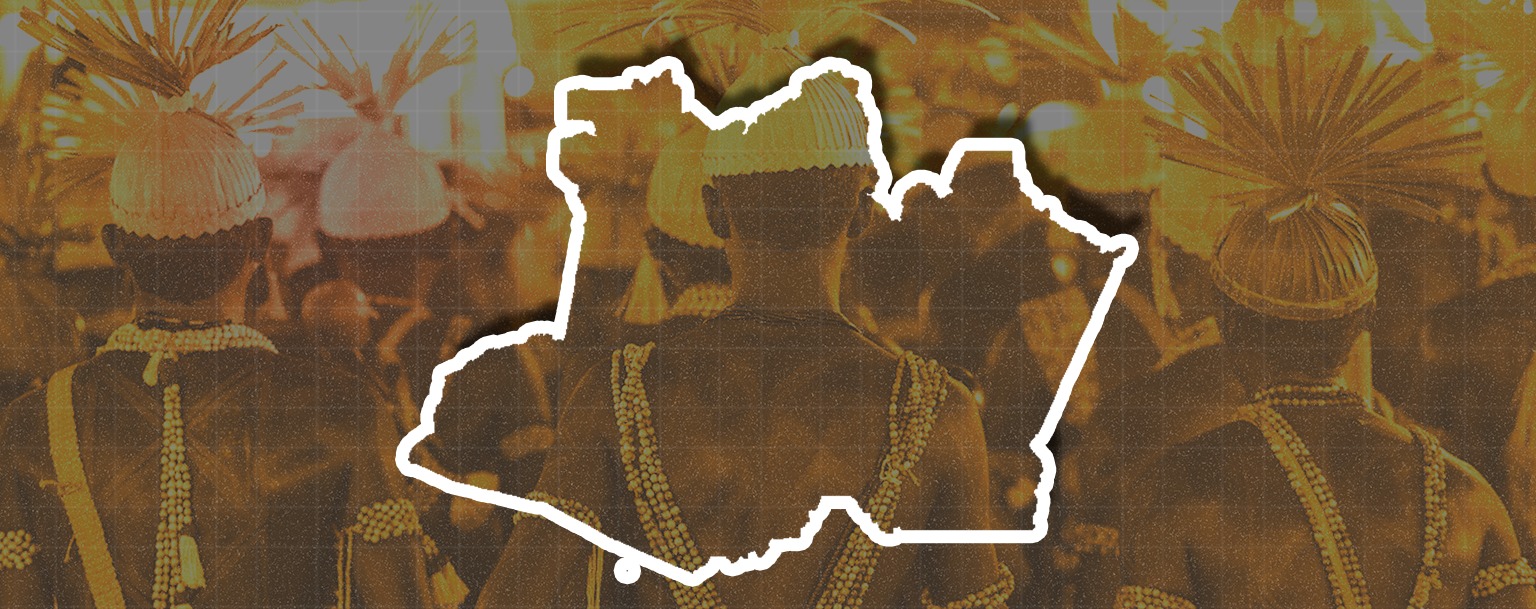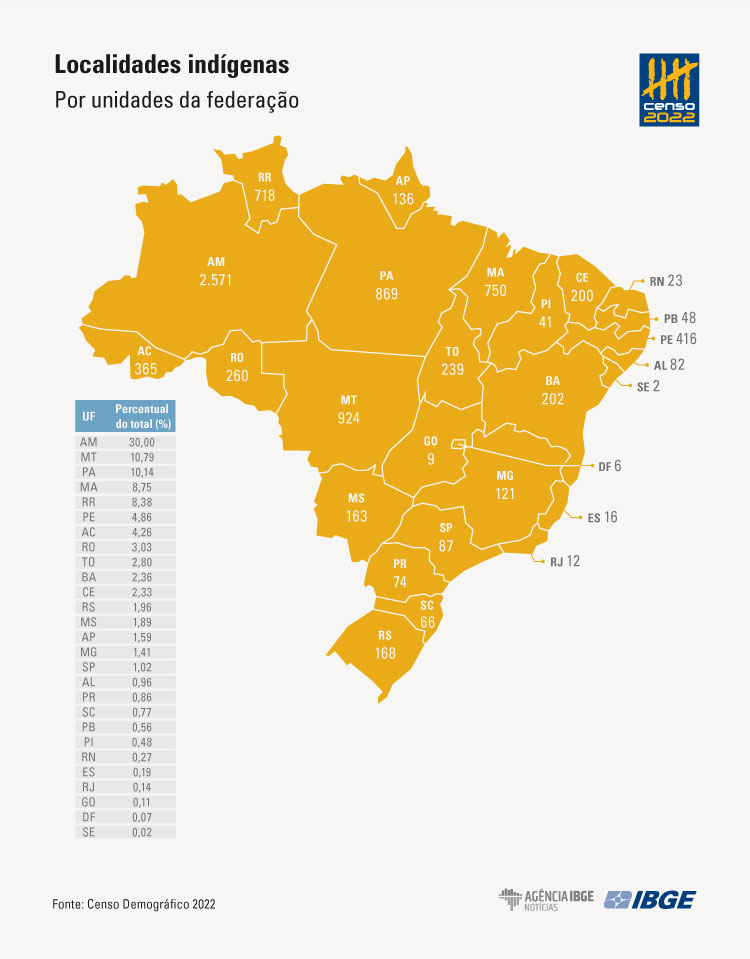Amazonas is the State with the most Indigenous areas in Brazil
23 de January de 2025

By Letícia Misna – From Cenarium
MANAUS (AM) – Amazonas remains the state with the largest concentration of indigenous areas in Brazil, according to the new report from the 2022 Census by the Brazilian Institute of Geography and Statistics (IBGE), released on January 19.
According to the data, Amazonas has 2,571 indigenous territories, equivalent to 30%; followed by Mato Grosso with 924 areas (10.79%); Pará with 869 (10.14%); Maranhão with 750 (8.75%); and Roraima with 718 (8.38%).

In total, the Northern Region holds the majority of these areas. Among the 20 Brazilian cities with the highest number of indigenous territories, 18 are in the North. The region has a total of 5,158 territories, or 60.20%.
Among these municipalities, seven are in Amazonas. São Gabriel da Cachoeira (AM), known as “the most indigenous city in Brazil,” stands out with 505 areas.
The remaining positions belong to the Northeast, with 1,764 areas (20.59%); the Central-West with 1,102 (12.86%); the South with 308 (3.59%); and the Southeast, where there were 236 (2.75%).
“Considering the context in which indigenous people have greater mobility between local groups or in areas characterized by the occupation of vast territories, it is possible that there is greater spatial diversification and, consequently, a larger number of locations”, noted Fernando Damasco, manager of Traditional Territories and Protected Areas at IBGE.
The Northern Region also leads in terms of indigenous population, with 753,780 people.
Brazil
According to IBGE, there were 8,568 indigenous locations in Brazil in 2022, identified in all states and the Federal District. Most of them (71.55% or 6,130) were in declared, homologated, regularized, or designated as indigenous reserves on the reference date of the Census, while 2,438 (28.45%) were outside these areas.

